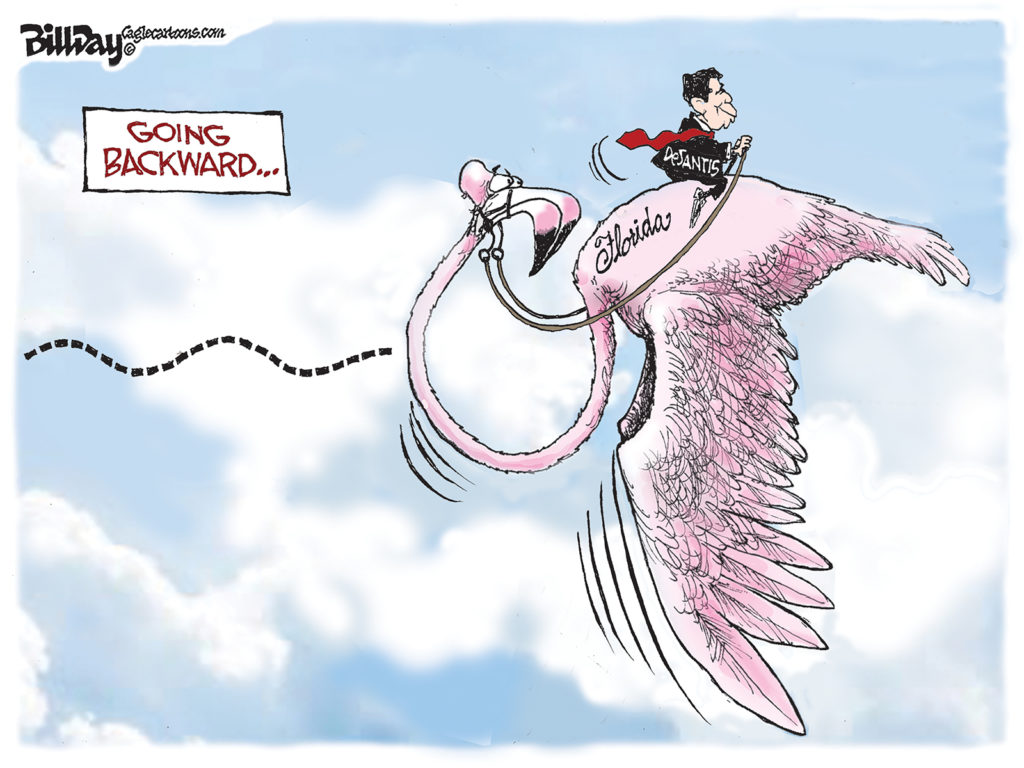Local government budget hearings haven’t even begun yet and it’s already spawned mythic conversations.
There are the myths about the myths cited by Memphis City Councilman Joe Brown, the myth about the need for joint city-county funding for joint city-county boards by Shelby County Mayor Mark Luttrell, and the general myths about City of Memphis that are framing up the upcoming budget hearings.
We began with Councilman Brown. Rather than engage in a discussion about priorities and fiscal options, Mr. Brown often has moments when his rhetoric intensifies and his volume elevates as a defense mechanism to addressing the facts. That was clearly the case at the last City Council meeting when, responding to comments that higher taxes could force people out of Memphis, he said: “Nobody’s going to leave Memphis. That’s just a myth for those who want to keep Memphis stagnated.”
It’s hard to imagine why any employee of City of Memphis – and certainly no elected official – would want to keep Memphis stagnated but it’s not the lapse in logic that got our attention. It was the realization that Mr. Brown probably does in fact believe that it is a myth that people are moving out of Memphis.
Factoids
Well, here are the facts:
- Memphis lost population in the 2010 Census for the first time since the yellow fever epidemics (a fact pointed out by former Commercial Appeal reporter and demographer Jimmie Covington); the population loss between 2000 and 2010 was 3,211, so perhaps Councilman Brown considers that minor enough to argue that out-migration is a myth.
- Memphis is one of the most hollowed out cities when it comes to middle class families, and that includes families of all races. Most dramatic proof is that in one decade, the African-American population of DeSoto County doubled and is now 22%. It’s not white flight now; it’s middle class flight. In 66 suburban census tracts in Shelby County, the estimated number of black residents has increased 56 percent — from 83,019 in 2000 to 129,443 in 2010.
- Within the 1970 city limits of Memphis, there are more than 30% fewer people; if Memphis were not able to masquerade its population losses through annexations, the city might well have lost more people than any city in the Sun Belt.
- Polling shows that the top reasons for people to move out of Memphis are taxes and lack of confidence in government.
Here are the kickers:
- Between 2000 and 2010, 54 Memphis census tracts (out of 173) lost more than 10% of their population, 23 of these lost more than 20%, and 5 lost more than 30%. Ironically, some of these census tracts are in Mr. Brown’s district.
Nickled and Dimed
Then, Councilman Brown doubled down, stating his unshakable opposition to reductions in the city government workforce or more cuts in employee salaries. It’s the perpetuation of the widespread concept that government employees are guaranteed jobs for life, and that city government’s allegiance is to employees rather than the taxpayers who pay for them. We understand that employment by government and the city school district have traditionally been the entry points to the middle class for African-Americans in Memphis, but the African-American majority of Memphis who pay taxes also deserve consideration in these discussions.
Mr. Brown said: “People pay taxes for services. We must deliver them. Not one member of this body has the right to threaten another person’s livelihood…a few nickels and dimes is (sic) not going to hurt.” Clearly, he was referring to the jobs of government workers, not the jobs of constituents and small businesspeople. Here’s the thing: polling has shown that the top reasons that people move out of Memphis are taxes and lack of confidence in government, so eventually those “few nickels and dimes” do make a difference.
Then, there is Mayor Luttrell, who said he is “disappointed” that City of Memphis can’t put up half of the $15 million that he calls “full funding” for EDGE. The truth is that Memphians pay about 70% of the county’s $7.5 million funding for EDGE, and if City of Memphis puts up half of the $15 million budget proposed for EDGE, it means that Memphians are paying more than 80% of the total funding for EDGE (Memphians pay 100% of the city half and 70% of the county half). By the way, only 50% of the members of EDGE come from Memphis.
Here’s the thing: the cost of economic development should be on the broadest tax base, and that’s Shelby County. After all, we haven’t heard anything about Bartlett, Collierville, Germantown, Lakeland, Millington, and Arlington putting up any money for EDGE, so as usual, Memphians are the only people paying twice.
Edging Ahead
Meanwhile, Mayor Luttrell said he’s eliminating the county’s $1 million funding for the Greater Memphis Chamber of Commerce, which has been instrumental in the recent economic development successes in our county. It’s no secret that the smaller cities’ Chambers of Commerce have been taking shots at their Memphis counterpart since Mayor Luttrell took office, so it’s unclear whether the cut in funding is a budgetary imperative (but if Shelby County can put $7.5 million into EDGE, which is less than a year old, it’s unclear why it can’t put $1 million into the Memphis Chamber) or whether it’s political.
More to the point, Mayor Luttrell refers to fully funding EDGE, but there’s no explanation of how the $15 million amount was decided on or what the money is going to be used for. That said, for the city to fully fund EDGE, it would need to increase the tax rate five cents, and who’s to say that a lower tax rate might be a much greater incentive for economic development than the proposed funding for EDGE. And if local government is going to put up millions more for incentives to go with the $50 million in waived taxes already, there should be a serious discussion about our deepening overreliance on financial incentives.
As for the Greater Memphis Chamber, it has a clear track record, and after the successes of Mitsubishi, Electrolux, Blues City Brewery, and the 10,000 direct and indirect new jobs in the past couple of years, it would seem that the Chamber deserves a bonus rather than a pink slip from county government.
Then, there are the general myths that reliably surface anytime budget hearings begin. Like the one that Memphis cannot even discuss the possibility of a reduction in the workforce of Memphis Police Department and Memphis Fire Department. As city government considers a tax increase of almost 50 cents, no service should be sacred, and all should be evaluated to determine if reductions can be made.
Locked Up
Then there are other myths in city budgeting. For years, all other services of city government have been cannibalized little by little to pay for the growing budgets of the fire and police departments. But everything in a city is connected, so it’s possible that lack of funding to cut weeds in city parks or abandoned lots, to fight blight, to fund activities at libraries, parks, and community center activities could have impacts on the crime rate too.
As Mayor Luttrell, former sheriff, has said, the “lock them up” strategy that processes 60,000 people through Shelby County Jail every year is the easy part, but it’s the “other two legs of the stool” that need more attention and emphasis (meaning funding): prevention and intervention.
Much of that prevention and intervention could take place in city parks, community centers, outreach programs, youth programs, and libraries, but customarily the money for prevention and intervention is sacrificed on the altar of crime suppression.
Memphis Mayor A C Wharton is precisely on the right track when he appointed a committee to identify investments and interventions in early childhood development. It requires a different kind of political perspective, because past practice tells politicians that the public is much quicker to pay $30,000 to lock up a young offender than the few thousands of dollars a year to pay for interventions that give children better options for the future.
Basically
We live in a political environment where the emphasis is on short-term gain. Investing in early childhood interventions will take 18 years for the return on investment to be clearly shown, so it requires more than politics as usual. Mayor Wharton has said that Memphis has structural issues that are a drag on its economy and on government budgets. The lack of a culture of opportunity for every child in Memphis is precisely one of those issues.
Ultimately, the question for the City of Memphis is whether it can fund proven intervention strategies when it can’t even fund programs in the parks that once gave tens of thousands of Memphis children an outlet for exercise and wholesome activity.
While the budget for parks has remained essentially flat over the past 15 years, the police and fire budgets have swollen. Memphians frequently recall the days when the city was named one of the country’s cleanest cities. These days, it’s rare for an out-of-town visitor not to point out how much litter is on city streets.
Because of this, many people draw the conclusion that city government is incompetent and incapable of delivering basic services. They miss the point. There is less money to spend on clean-up programs and weed cutting because that money is now spent for police and fire services.
That’s why it’s time to have a real conversation about what Memphis should look like, what Memphians vision for their city is, and how much it costs to achieve it. The public may just want government to get the basics right, but first, we need the public to tell City of Memphis exactly what those basics are.







Is it true that without the annexation of Cordova, Memphis population loss would be close to 30,000?
“we need the public to tell City of Memphis exactly what those basics are.”
Agreed. But the continuing struggle is:
A) how do we define WE and PUBLIC? Citizens (that even in Memphis have wide philosophical chasms)? Corporations (who currently have vastly different views than citizens)? At risk of bailing talent? Future talent (who isn’t here to speak for itself)?
More importantly B) how do we engage this mythical WE/PUBLIC? We, as citizens, have a history of marching and yelling and making up simplistic us vs. them arguments from the comfort of our porch. We have rarely been asked, inspired or even logically engaged in real solutions in a way that generates confidence that our time & voice matters. How do WE reach a checked-out PUBLIC?
How do we make the Budget an issue-like discussion that people rally behind?
Madison Avenue bike lanes was an issue that garnered support or opposition from organized factions that were new. Strip Club regulation brought together strange bedfellows in religious groups, social services and big business around an unlikely issue. NBA now was an irresistible campaign that excited the pants off of people to do something big.
Is it possible to make the hard-to-understand budget an issue based discussion that people will gravitate to?
Budgets tend to become issue based line by line therefore making coalitions difficult as each of us shift with each line. Some use this to their advantage while most sit on the sidelines. Memphis faces a major problem in that it has annexed itself into massive debt and future maintenance costs which it cannot afford. Until we begin to understand this and take the drastic steps to address it there will be no solution. It took 50 years to get here and it will likely take 50 years to get out of it. Must start now.
You could just have said “Joe Brown is out of touch withy reality, an elitist, racist, living in the past, perpetuating bad government, and an obstacle to progress and everyone would have agreed.
Would have shortened your story a lot though.
Or, “Joe Brown is BAD for Memphis progress”. Yes he is.
Or, Joe Brown is engaged in some shady things.
Joe is a lot of things, but, a public servant he is not.
Joe needs to step down.
MLGW, MCS, and City Government is bloated with handout jobs and cronyism. We all know it.
We have duplicated service and still:
SERVICES DO NOT GET DELIVERED PROPERLY IF AT ALL IN MEMPHIS.
MLGW still can’t get a meter read properly.
Memphis = Dubious Effortville.
There are no laws to address that?
Make some.
George,
Do you think it would be crazy to suggest that we tackle it line-by-line? Even if it takes a few years… what if we went line by line or department by department and publicly aired what our priorities, costs and resources are for each? I suspect at first people would be into it and participate. But over time, you could be right and the public would zone out.
My problem is that I have heard the “it didn’t take six-months to get into this mess and it will take a long time to get out” excuse for, well, long enough to have gotten out of the mess.
While I like the line-by-line methodical solution. I am inclined to think that a crisis would be better. We see the crisis coming (the ones that aren’t already on us). What if we just pretend they are all already here and force change NOW even if it is something drastic? The debt and maintenance may only be addressed if we do something bold as opposed to deliberate over time?
Here’s a simplistic idea to be considered: Instead of focusing on short-term, one-off solutions, the administration(s) could set benchmarks. That way they get credit in the short-term for their progress toward the long-term. It’s a simple political tool that makes short-term decisions fit in a long-term box, by generating praise and reward for short-term discipline. Seattle’s carbon-neutral city idea is a good precedent, among others.
Long-term benchmarks could include things like capping police and fire department budgets at a set percentage of the city budget, and restricting their annual growth to within a percentage point or two of the year-over-year growth in city revenues, with a maximum total deviation of a couple percentage points over a five-year period, the long-term benchmark being to reduce police and fire to a certain percentage of the city budget within ten years. To address the priority of police spending, perhaps incentives could be created, so that, for example, if the police department can find it within their budget to spend more on prevention and intervention instead of incarceration, they are rewarded with a slightly larger total budget. So instead of conceiving of independent spending allocations for all three police roles for which the city doesn’t have enough money, the city incentivizes a shift in priorities without committing to more total spending.
@ John,
I hope I didn’t send the message that we should put anything off. Just being realistic about what the resistance and quagmire will be like. I think we are in a crisis moment and this will be emphasized this week by the presentation which Charles Marhon will give this Wednesday night 5:30 at Ducks Unlimited. I agree completely with the benchmark idea mentioned by Anonymous 10:44.
is this proposed budget posted online somewheres?
You can see the 2013 budget proposed by Mayor Wharton at
http://memphistn.gov/pdf_forms/Operating%20Budget%202013/MemphisOpbudget_v13.pdf
Anonymous: Without Cordova annexation, Memphis population would have gone down about 30,000 (maybe even a bit more).
For those who are interested in the population numbers, here is a piece I wrote on the 2010 Census results and birth-death statistics that ran in the Daily News more than a year ago:
VOL. 126 | NO. 58 | Thursday, March 24, 2011 Memphis Daily News
Analysis Shows City Lost 90K Residents Last Decade
By Jimmie Covington
The area currently within the Memphis city limits lost 80,000 or more residents to outward movement during the past decade, the most recent census and birth-death numbers show.
And the number may actually be 90,000 or more.
The pattern of loss appears to be similar to the losses that have occurred in Detroit and Newark and some other cities across the nation, said Dr. Louis Pol, a demographer at the University of Nebraska at Omaha.
Pol, who is also dean of the university’s College of Business Administration, is a former faculty member at the University of Memphis and is familiar with the Memphis area.
“This isn’t the first decade of net out-migration,” he said. “There have been several other decades. There is a momentum to it.”
Recently released 2010 census figures show Memphis’ population dropping from 650,100 in 2000 to 646,889, a decline of 3,211.
But Pol agreed that those figures alone don’t take into account that during the 10 years, Memphis annexed areas that had a 2000 census count of 40,643.
If everyone had stayed in place, the annexations would have boosted Memphis’ population to 690,743, the number the U.S. Census Bureau used as the base for estimating the city’s population each year between the censuses.
And then there is the matter of births and deaths, another major factor affecting an area’s population.
Vital statistics show that Shelby County as a whole recorded 68,952 more births than deaths during 2000-2009. They do not show how many involved Memphis residents.
However, Pol said that given the size and age makeup of Memphis’ population compared to that in the county outside the city, a gain of 50,000 from births over deaths within the city would “probably be a pretty good estimate. And it could well be more.”
A gain of 50,000 from births exceeding deaths plus the 40,643 residents gained from annexations would mean that the current city area has lost more than 90,000 people to outward movement.
Some of those people went to Shelby County outside Memphis, some to surrounding counties and perhaps some to other parts of the country.
Despite the annexation of the 40,643 residents and the territory where they lived, the population in Shelby County outside Memphis rose from 247,372 in 2000 to 280,755 last year.
The figures also uphold the view that the number of African-Americans and other minorities living in Shelby County outside Memphis has increased significantly.
The 2000 census found that Shelby County’s suburban population was 201,106 white, 36,616 black and 9,650 other.
The 2010 numbers are 186,150 white, 73,694 black and 20,911 other.
Because of the large loss within Memphis, the county as a whole lost people to outward movement although, unlike the city, the county had an increase in population as a result of the births exceeding deaths.
The county grew from 897,472 to 927,644, an increase of 30,172. However, as cited above, the “natural increase” from births over deaths was 68,952, indicating a net out-migration of 38,780.
Calculations using the 2000 and 2010 census numbers reflect that Shelby had a loss of 66,112 white residents as a result of out-migration and a gain of 27,332 among African-Americans and other minorities from in-migration.
Lest one believe that most of the out-moving white residents went to DeSoto County and that few if any minority residents are choosing DeSoto County, consider these numbers:
Among the 42,801 people that DeSoto gained from movement of people, 26,712, or 62.4 percent, were African-Americans and other minorities, and 16,089, or 37.6 percent, were white residents.
DeSoto also gained 8,401 white residents and 2,851 minority residents from births over deaths in posting an overall 54,053 population increase over the decade.